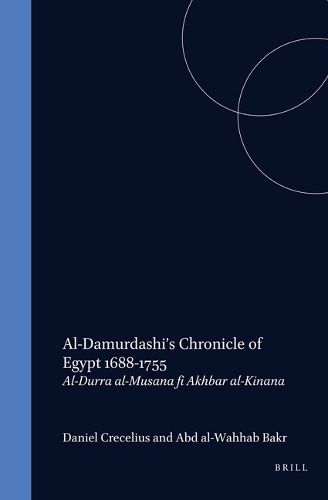Readings Newsletter
Become a Readings Member to make your shopping experience even easier.
Sign in or sign up for free!
You’re not far away from qualifying for FREE standard shipping within Australia
You’ve qualified for FREE standard shipping within Australia
The cart is loading…






This chronicle, allegedly composed by an officer of the ‘Azab regiment in Cairo, surveys the conflicts between the two major mamluk factions, the Faqariya and the Qasimiya, and their struggles with the Ottoman governors and the Ojaqs to control Egypt’s administration and the lucrative tax structure in the period from 1688-1755. Al-Damurdashi, who organizes his chronicle around the tenures of the Ottoman governors, focuses on the military class, but provides a wealth of descriptive information on a wide range of subjects, including military tactics, administration, taxes, food and clothing, the bedouins, coinage and fiscal policy, the mamluk system, and social life. After al-Jabarti’s famous 'Aja'ib al-Athar fi 'l-Tarajim wa 'l- Akhbar, al-Damurdashi’s chronicle is perhaps the most important manuscript source for the entire three centuries of Ottoman rule in Egypt. It is more authoritative and more descriptive than al-Jabarti’s account for the period it covers, and was a major source from which al-Jabarti drew material for his own history of the period.
$9.00 standard shipping within Australia
FREE standard shipping within Australia for orders over $100.00
Express & International shipping calculated at checkout
This chronicle, allegedly composed by an officer of the ‘Azab regiment in Cairo, surveys the conflicts between the two major mamluk factions, the Faqariya and the Qasimiya, and their struggles with the Ottoman governors and the Ojaqs to control Egypt’s administration and the lucrative tax structure in the period from 1688-1755. Al-Damurdashi, who organizes his chronicle around the tenures of the Ottoman governors, focuses on the military class, but provides a wealth of descriptive information on a wide range of subjects, including military tactics, administration, taxes, food and clothing, the bedouins, coinage and fiscal policy, the mamluk system, and social life. After al-Jabarti’s famous 'Aja'ib al-Athar fi 'l-Tarajim wa 'l- Akhbar, al-Damurdashi’s chronicle is perhaps the most important manuscript source for the entire three centuries of Ottoman rule in Egypt. It is more authoritative and more descriptive than al-Jabarti’s account for the period it covers, and was a major source from which al-Jabarti drew material for his own history of the period.